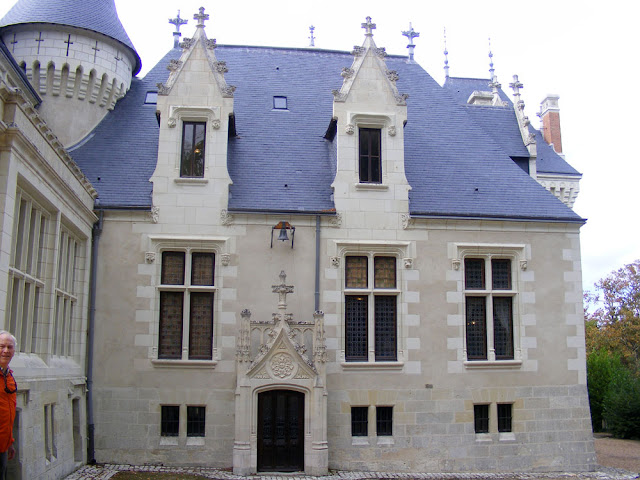What the nest boxes and ventilation tiles used as entries look like.
 |
| Photo courtesy of J-P Barthel. |
Nest box in position.
 |
| Photo courtesy of J-P Barthel. |
The first hurdle was establishing who would pay for them. The architect was completely open to installing them as part of the project, but needed to know if there was funding. Luckily my friend Alain offered to at least partially cover the cost, in memory of his mother, who always recorded the dates of the swifts arrival and departure over many years. The rest was covered by the local council.
Nest box in place behind the battens, with the membrane in place.
 |
| Photo courtesy of J-P Barthel. |
The next hurdle was getting French language technical information and specifications to the architect and
roofers. Luckily, a Swiss swift conservation organisation had published a great
instruction manual for builders, homeowners and architects, in French, which Carolyn sent on to our architect. In the end, after a bit of angsting about where to buy ready made boxes (which were rather expensive if sourced in France) the carpenter made boxes and between them the architect and the roofers came up with their own ingenious solution.
Swift nest boxes in place just before the tiles go back on.
 |
| Photo courtesy of J-P Barthel. |
They made nestboxes which sit behind the batons on the roof and prevent the possibility of the birds accessing the whole
roof area (with its precious,
newly conserved oak vaulted ceiling). To provide access to the outside the entrance to the nest boxes is a traditional terracotta ventilation tile, in a sort of upturned cup shape. The real ventilation for the roof is provided by copper slips that replace tiles every now and then across the roof, resulting in a little gap that is covered with a grill to prevent any undesirable creatures getting in.
The entrances to two of the new swift nests.
Carolyn and I are really pleased that the suggestion to add nest boxes was well received. That's one more architect and one more roofing firm educated about how they can help a species that is in decline. It's too early to tell if the swifts will like our new condo, but we'll be watching what happens next year. Nest placement isn't an exact science and they may decide they don't like being south facing (maybe a bit warm) or the nest boxes may be occupied by sparrows or another species before the swifts get back from their winter in Africa. This happens a lot, but apparently, if they really like a site, swifts are quite capable of evicting sparrows. If not, a simple modification to reduce the entry hole size might be in order.
Swifts nesting in the Logis Royal in Loches -- this is what we are hoping for.


















































